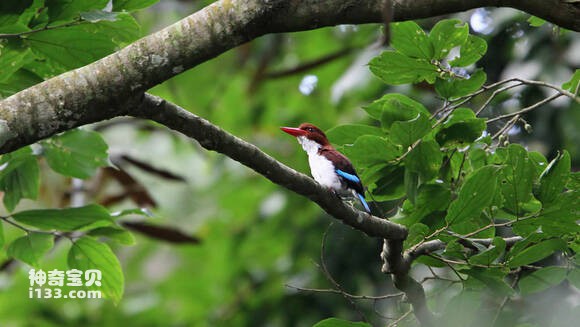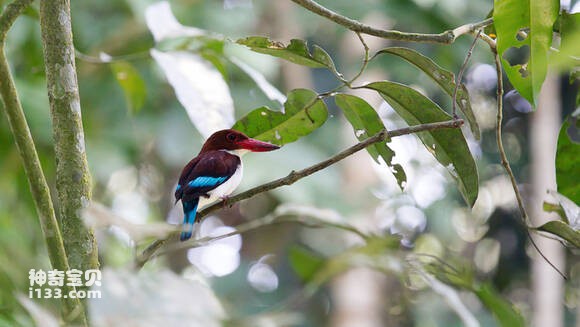Halcyon badia
IUCN
LCBasic Information
Scientific classification
- name:Halcyon badia
- Scientific Name:Halcyon badia,Chocolate-backed kingfisher
- Outline:Climbing birds
- Family:
Vital signs
- length:No textual research information is available
- Weight:No textual research information is available
- lifetime:No textual research information is available
Feature
Distribution and Habitat
The chestnut emerald is found in central and southern Africa (including the southern Arabian Peninsula and the entire African continent south of the Sahara Desert (Tropic of Cancer).)
The territory occupied by the chestnut emerald lies between sea level and 1,400 meters. It is usually found in dense tropical rainforests and near river banks, such as ponds.
Appearance
Among the chestnut-backed emerald adults, the head is mahogany black, and the mantle is dark brown. The upper part of the tail is black, the middle part is mostly bright sky blue, and the end is dark. Covered wing dark tone. The mouth is red or brownish-red, and dark brown irises surround the red eyes. The legs are reddish purple. The young bird is different from the adult bird, the breast of the young antelope skin is obviously darker. The tail shows small black dots and less blue. The beak of the chick is pointed orange.
The mouth is thick and long like a chisel, the base is wider, the mouth peak is straight, the peak ridge is round, there is no nasal groove on both sides; Wing circle, the first primary feather is equal or slightly shorter than the seventh primary feather, and the second, third, and fourth are nearly equal in length; Primary feather base with white spots; The tail is round.
Details
Halcyon badia, Chocolate-backed kingfisher, has three subspecies。

Chestnut back jadeite is generally alone or couples to hunt together. Like most forest kingfishers, they are completely carnivorous. Often searching for prey in leaves or dirt. The main diet is invertebrates such as crickets, spiders, scorpions, and snails. It also eats small vertebrates such as small fish, small snakes and lizards.

Chestnut back emerald nest on the earth cliff or river dyke, with the mouth digging tunnel cave for the nest, 60 cm deep, 20 cm wide, 10 cm high long, oval. These caves are generally bare of bedding. The eggs are laid directly on the nest ground. Some also drill holes in tree trunks for nests, which are 4-5 meters above the ground and are wrapped with vines.
Listed on the International Union for Conservation of Nature (IUCN) Red List Protection Level: Not Threatened (LC).
Protect wild animals and eliminate wild meat.
Maintaining ecological balance is everyone's responsibility!








